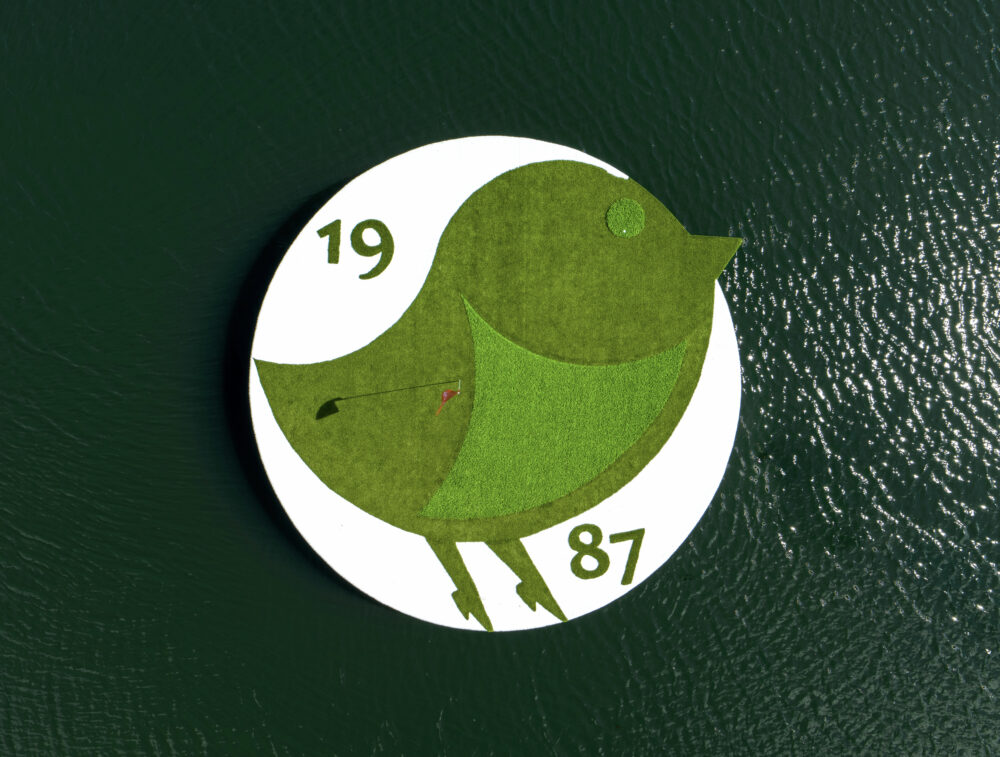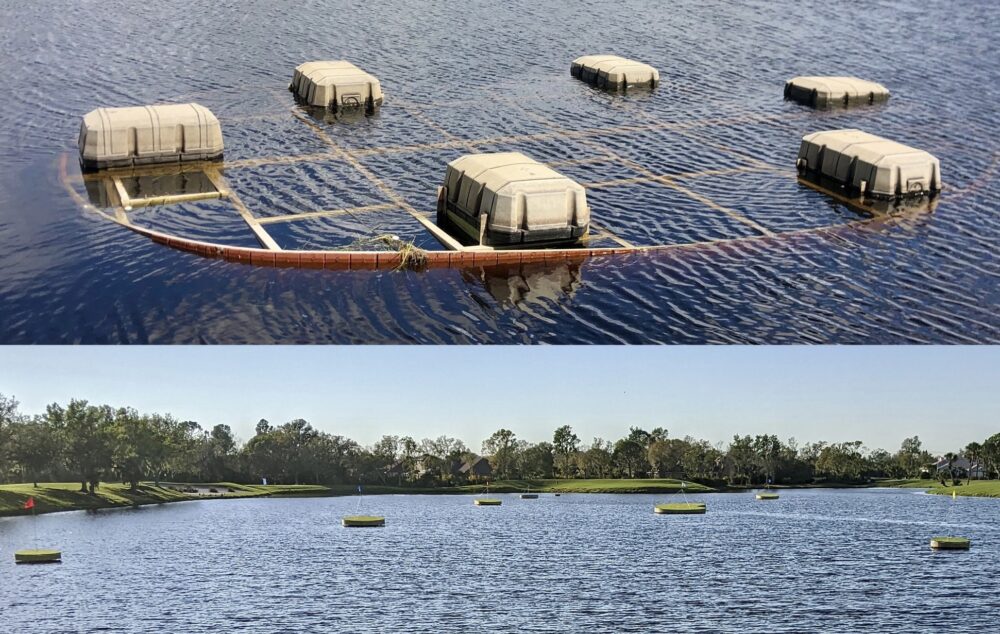
By Water Or By Land – Aqua Greens Rolls Out Carpet for N.H. Property
By Dave Allen
Randy Rockwood didn’t have to wait long to record his first hole-in-one.
The plumber from Laconia, New Hampshire, took up golfing in 2014, and less than a year later, on July 4th no less, made an ace.
“I should’ve stopped golfing right then,” joked Rockwood, a self-described ‘bogey’ golfer. “It got me really hooked.”
Rockwood started playing more golf in 2015 and ’16 and later that year received a bulk supply of about 2,000 golf balls from his father for Christmas. The very next year, he purchased his grandparents’ two-story, ranch-style home near Lake Winnipesaukee, and every day that summer he’d set a few balls down and launch them into the surrounding woods. “There are probably a couple thousand of them out there,” he says.
That same summer, Rockwood and good friend Shawn Tebbetts of Tebbetts Landscapes spent a week building a 2-foot high, rock retaining wall to keep the ground from falling into Rockwood’s driveway. The wall remained untouched until the next summer, when Tebbetts introduced Rockwood to Aqua Greens Owner Matt Gault. While Gault’s company is primarily in the business of building and installing floating greens, their meeting prompted Rockwood to think about how he might utilize the piece of perched land behind the retaining wall and build his own putting and pitching green there.
“I don’t mind paying to go play at golf courses, but the cheaper the better,” said Rockwood. “So I figured, ‘Why not build one here?’ It would give my something to aim at besides the trees.”
In July 2018, Rockwood put together a preliminary sketch of the 22’ x 35’ green and surrounding retaining wall and rough. Tebbetts got Gault to order some carpet for the green surface and had it delivered to Rockwood’s home, where it remained wrapped up until just a few months ago. Due to the impact of the COVID-19 pandemic, Rockwood and Tebbetts finally found themselves with a little bit of free time and dug ground on the 100-percent land-based green in early September.
For basic fill, Tebbetts and Rockwood used crush ledge pack—a hard, compact gravel-like material often used on roads, driveways and walkways. Underneath the ledge pack was a filter fabric which helped to stabilize the soil and also serve as protection against the formation of a sinkhole. For a finishing layer, they applied a fine, powdery material called stone dust, which helps cover any little imperfections in the ledge pack and is also much easier to shape than a larger, aggregate material.
“We basically prepped this whole thing like you would prep a patio,” said Rockwood, who previously worked with Tebbetts in landscaping.
As for the design of the green itself, Rockwood didn’t want something entirely flat that he would quickly become bored with, and relied on his knowledge of the many golf courses he previously played to add some contours and shape to the green. There are two levels to the green—a lower level that’s relatively flat and an upper shelf that’s 9 inches higher, due to a rise midway across the green.
“We worked with the grade that existed without trying to reinvent the wheel,” said Tebbetts. “We wanted to fit it to the natural surroundings so it looked like it belonged there, not like it was forced.”
Once they were done fine tuning the contours of the green, it was time for Gault’s team to roll out and install the carpet, then infill it with sand. The installation process took a full day, says Gault, as did the infilling process. Gault’s crew top-dressed the 1-inch, synthetic putting surface with nearly 6,000 pounds (or two pallets worth) of bagged, kiln dry green sand. Using a Scotts fertilizer spreader, one member of Gault’s team would walk around the green sprinkling a thin layer of sand across the fabric while another one would follow behind him and brush the sand into the green. Gault had a half-dozen guys pushing a fertilizer spreader and brooms for hours in order to infill the nearly 1,000 square-foot surface.
“It took several days to get that thing up and running, but it turned out awesome,” said Gault. “There are a number of high-priced homes in Randy’s neighborhood and I would put this green on any one of them, it’s that nice.”
The primary advantage to infilling a green with sand, which Aqua Greens does for most of its large floating island greens, is that it allows the ball to react as though it’s landing on a real green surface. In other words, the ball will hold and won’t ricochet off the green. The sand also helps simulate the same kind of putting conditions you’d find on a real green, which was especially important to Rockwood since he struggles with three-putting greens.
“Matt’s expertise was invaluable,” said Rockwood, who has holes cut on all four corners of the green to give each putt a unique look. “This thing rolls like a legit putting green. It’s amazing.”
Rockwood said he’s out there every day practicing his putting, although he also likes to hit flop shots and other various chip and pitch shots into the green. He’s also not afraid to try a few trick shots, which includes hitting shots from his backyard over the house and off the deck of the second floor to the green below, a 25-yard shot with about 10 feet of elevation change.
“This is insane. “I wish everybody could do this,” said Rockwood. “I love looking out the window in the kitchen and seeing this [green] every day.”




